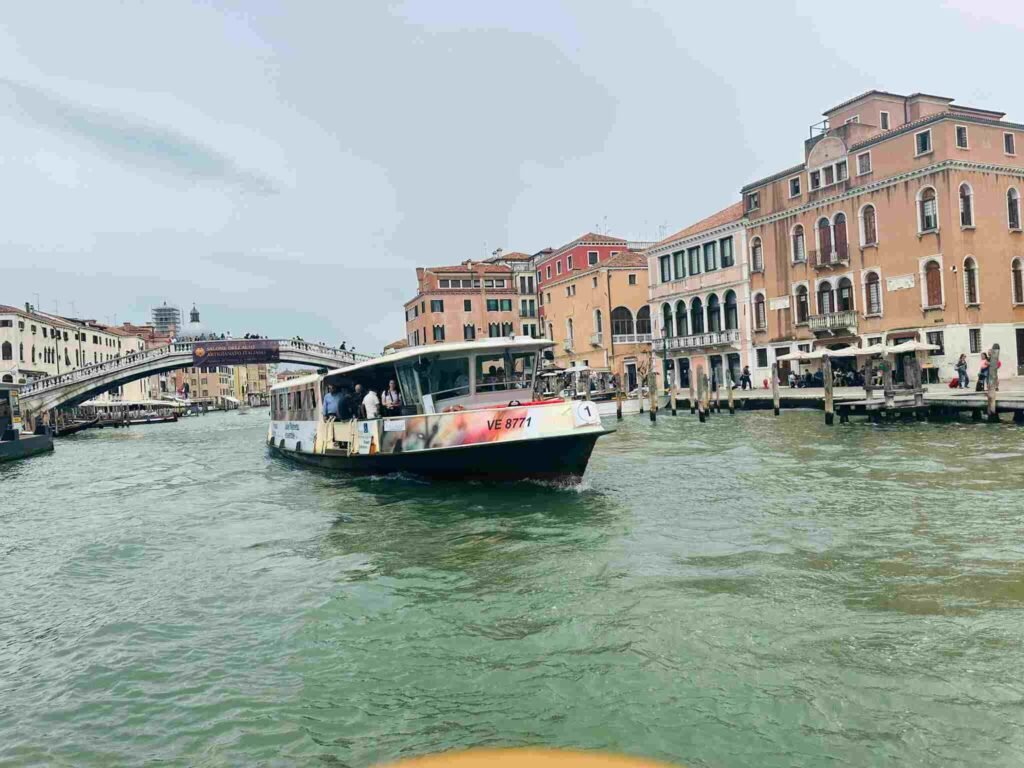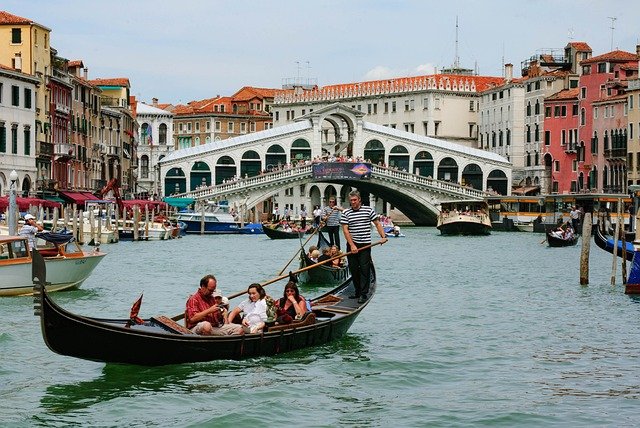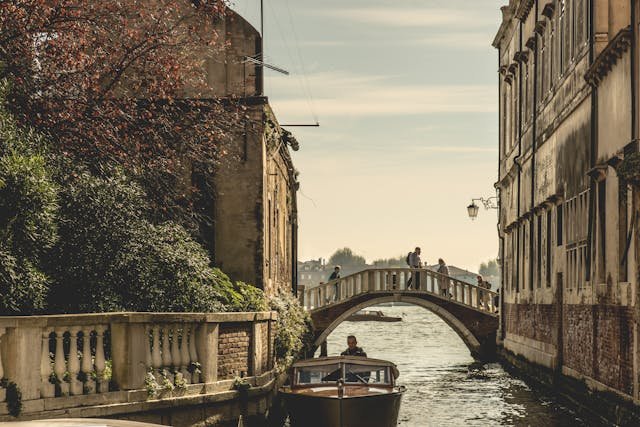Living in Venice, a city famously built on water and devoid of cars, is an experience unlike anywhere else in the world. The city’s layout, transportation, and daily rhythms have been shaped over centuries by its unique environment, leading to a lifestyle that feels both tranquil and timeless. The absence of cars dramatically reduces noise, pollution, and the hectic pace associated with urban centers, creating a calm yet vibrant atmosphere. Here’s a more in-depth look at how Venetians navigate their daily lives in this car-free city.
The City Layout: A Network of Canals and Narrow Streets
Venice is a dense network of over 150 canals, more than 400 bridges, and countless narrow, winding streets called “calli.” These pedestrian pathways form the city’s primary thoroughfares, connecting neighborhoods (“sestieri”) through footbridges, alleys, and squares. The twisting, narrow alleys can be disorienting, especially for newcomers and tourists, but for Venetians, they become an intricate web of shortcuts, hidden paths, and familiar routes.
The heart of Venice is a place for walking. Daily life revolves around the piazzas (public squares), where residents shop at local markets, visit cafes, and gather for conversations. This communal lifestyle fosters a sense of intimacy and social interaction often missing in modern car-centric cities. Without cars, Venice is quieter; the loudest noises are the sounds of boat engines on the canals and footsteps echoing in the alleys.
Walking Through the Streets of Venice
Walking is the primary mode of transportation in Venice. Venetians are accustomed to navigating the city’s maze-like streets and bridges on foot, using local landmarks and signs to guide them. Signposts throughout the city point towards main attractions or districts, such as “Per Rialto” (toward the Rialto Bridge) or “Per San Marco” (toward St. Mark’s Square), helping both residents and visitors find their way.
Because streets can be narrow and winding, Venetians often become adept at finding the quickest routes through the city. This network of pathways offers a unique blend of planned exploration and spontaneity, as new sights and unexpected alleyways can be discovered at every turn.
Navigating the Canals: Boats as Public Transport
For longer journeys, particularly those requiring travel between different islands or across the Grand Canal, boats are essential. Venetian canals are essentially the streets of the city, and a variety of watercraft are employed to meet different needs:
Vaporetto (Water Bus): The vaporetti are Venice’s public transport system. Operated like buses in any other city, these large motorized boats follow regular routes along the Grand Canal and around the lagoon’s islands. Residents and tourists alike use the vaporetti for daily commutes, shopping trips, and visits to places like Murano, Burano, and the Lido. Although vaporetti can become crowded during peak times, they provide a reliable and efficient way to traverse the city.
Traghetti: For a quick crossing of the Grand Canal at various points where bridges are sparse, residents use the traghetto. These gondola ferries shuttle back and forth across the canal, offering an affordable way to avoid long detours. Unlike the more famous gondolas used for leisurely rides, traghetti are simple and utilitarian, providing a functional, no-frills crossing.
Private Boats: Many Venetian families own small private boats, which they use similarly to how people in other cities use cars. These boats, typically small motorboats, allow residents to navigate the city’s waterways efficiently. Owning a boat gives Venetians a level of flexibility in travel, especially for accessing less frequented canals and neighborhoods.
Water Taxis: For a faster, more personalized mode of transport, water taxis are available throughout Venice. Though more expensive than public transport, water taxis provide door-to-door service, which can be particularly useful for reaching specific hotels, restaurants, or locations not easily accessed by foot.
Goods, Services, and Emergency Response: Navigating Without Roads
Living without roads requires creative solutions for essential services like goods delivery, waste collection, and emergency response:
Deliveries: Without trucks or delivery vans, goods in Venice are transported by boat. Early each morning, delivery boats bring in supplies—ranging from groceries to construction materials—from the mainland. These items are then loaded onto handcarts or trolleys and wheeled through the narrow streets to their destinations. The daily process of goods transport gives the city a unique rhythm, with mornings often bustling with activity as workers navigate the alleys and bridges.
Waste Collection: Garbage collection is another logistical challenge managed by a fleet of specialized boats. Residents leave their trash outside at designated times, and workers collect it on foot, transferring it to boats that ferry it away for disposal. This process is labor-intensive but effective, and it helps maintain the city’s cleanliness.
Emergency Services: In emergencies, Venice’s responders rely on boats. Ambulance boats, police boats, and even fireboats are equipped to navigate the canals quickly. The city’s hospital, for example, has a dedicated dock where ambulance boats bring patients directly to the emergency room. This system ensures that, despite the lack of roads, Venetians can access essential services promptly.
The Rhythms of Venetian Life
Life in Venice moves at a slower pace compared to car-filled cities. Without the noise and rush of traffic, the city’s sounds are more subtle: the lapping of water against buildings, the hum of a passing vaporetto, the footsteps and conversations of people strolling along the canals. This quieter environment promotes a sense of community and leisure.
Venetians often shop locally, buying fresh produce from market stalls and small shops rather than large supermarkets. Daily routines are centered around the neighborhood piazzas, where people gather, socialize, and enjoy the atmosphere. The absence of cars not only makes the city quieter and less polluted but also allows for safer and more spontaneous interactions in public spaces.
Cultural and Social Impact
The car-free lifestyle fosters a strong sense of local identity and social interaction. Residents frequently encounter each other in the streets, markets, and cafes, creating a close-knit community feeling. This communal atmosphere is further enhanced by the city’s historic architecture and lack of modern urban infrastructure, allowing Venetians to maintain traditions and a way of life that has endured for centuries.
In summary, living in Venice means embracing a slower, more connected way of life. Navigation revolves around walking, boating, and finding joy in the city’s rich tapestry of alleys, canals, and public squares. Though daily tasks may require more effort than in car-friendly cities, Venetians have adapted to this unique environment, turning it into a defining aspect of their cultural identity.



